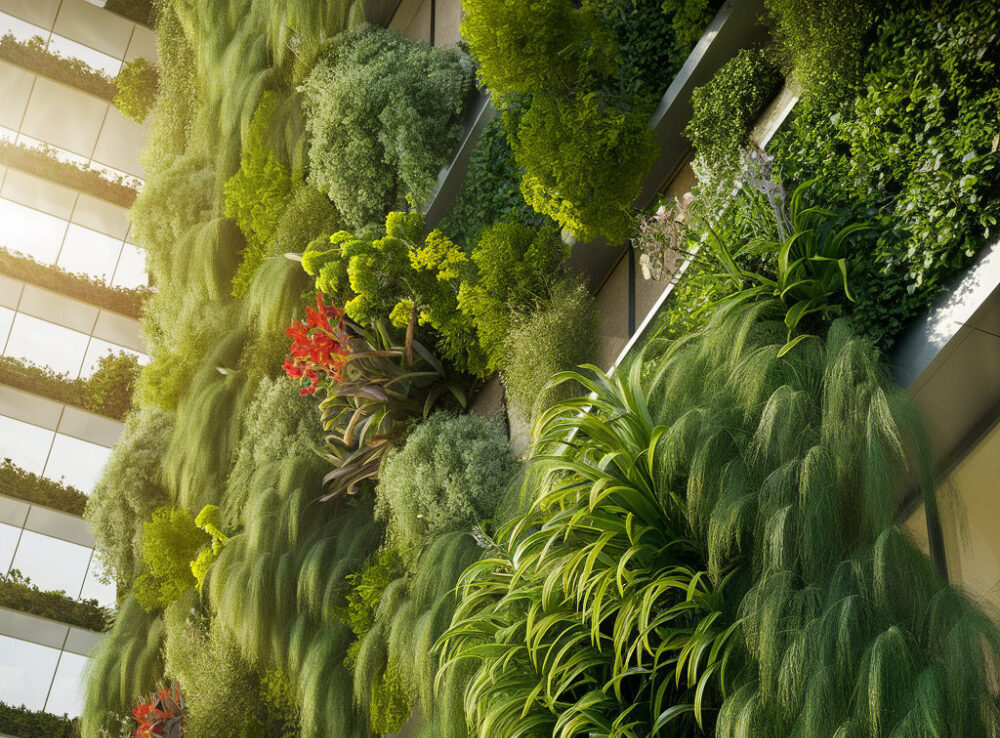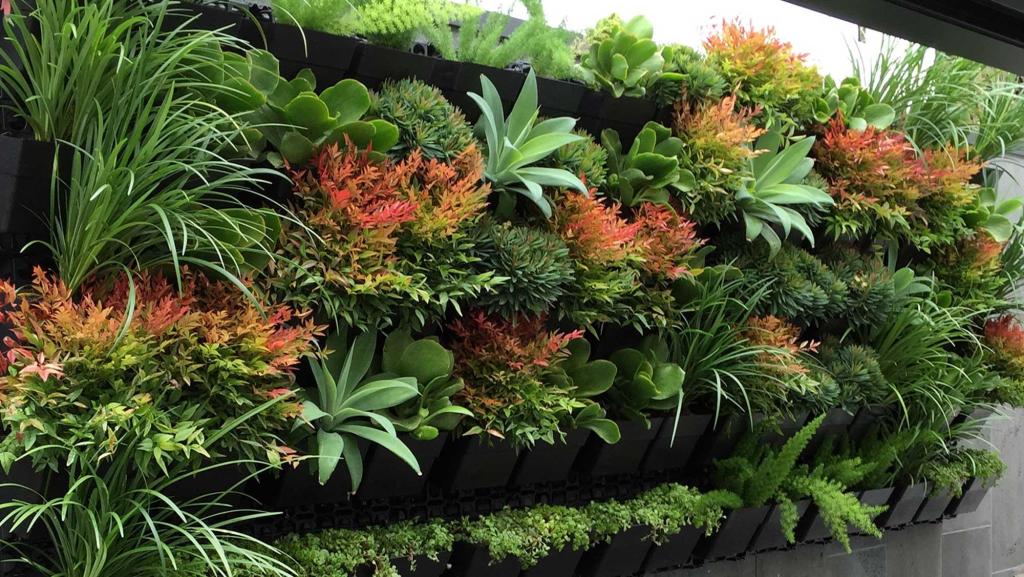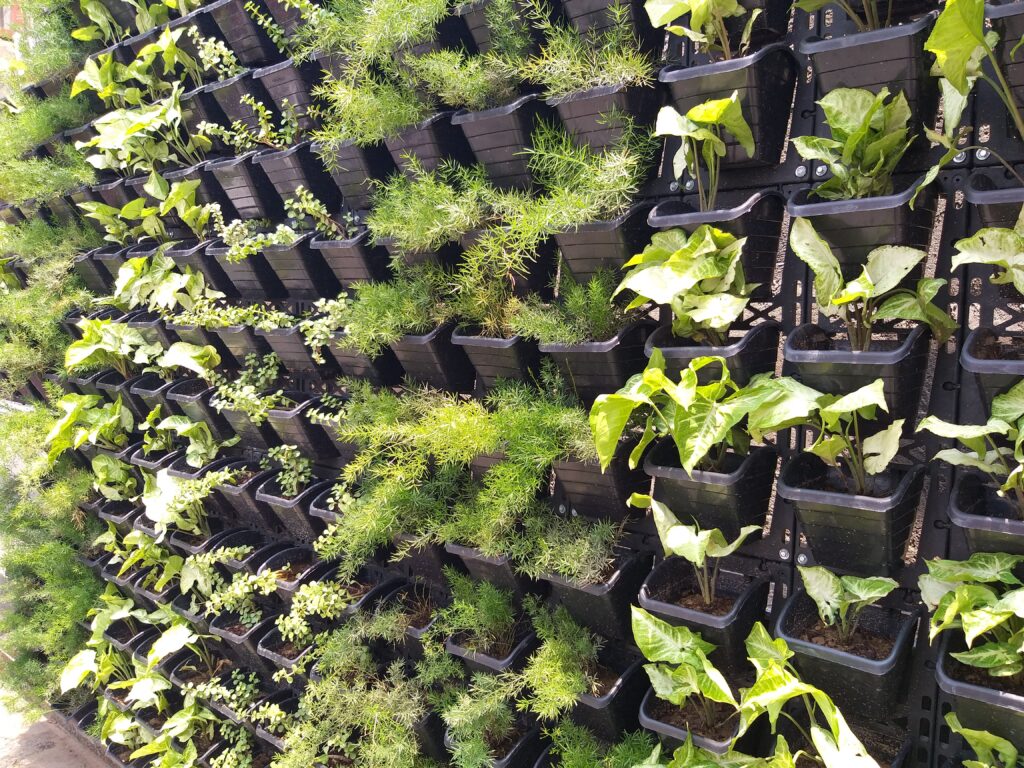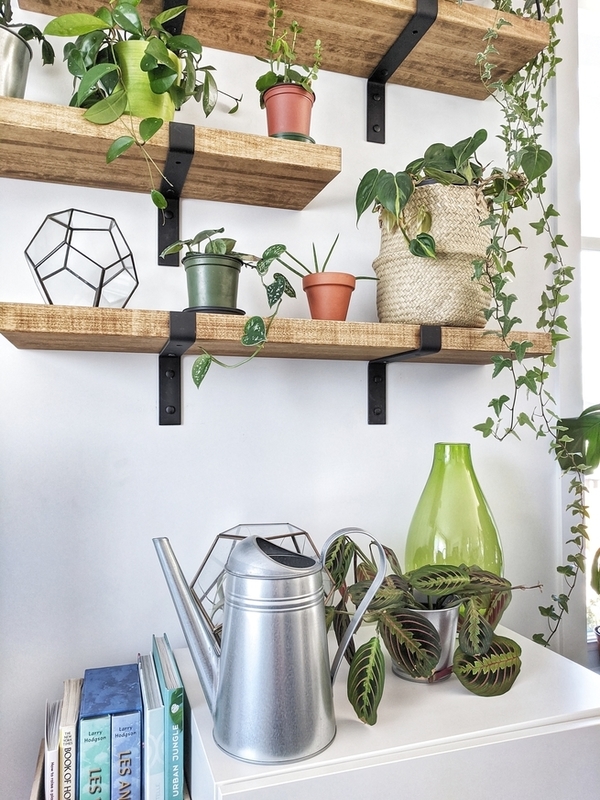We all dream of having a garden at home. Who wouldn’t want beautiful scenery all day? Although we cannot always plant a huge one, a vertical garden is easily doable at every home!
We want you to have your perfect garden wall, so we’ve compiled this step-by-step guide to get you started. Planting your own garden has never been easier!
What Is a Vertical Garden?

Dating back to the Hanging Gardens of Babylon, vertical gardens, also known as living or green walls, are still a thing in our modern age.
With this type, the plants grow upwards on a surface as opposed to the more traditional sense on the ground.
As urban areas continue to expand and open green spaces become scarcer due to development, vertical gardens provide an innovative solution.
They allow plants and greenery to grow even when horizontal yard space is limited. They can range from small flowers to a highly sophisticated and impressive garden.
5 Reasons You Should Choose Vertical Planting
This type of planting has become an interesting gardening option for many. If you’re looking to increase your green space, it’s definitely worth considering. Check out the reasons why.
1. Spacing Constraints
The most obvious reason to go for vertical planting is spacing constraints.
Whether you have a patio or a terrace, or you’re simply looking to decorate an indoor area, this garden is the right answer for you.
As the name suggests, the vertical growing nature of this garden doesn’t take up a lot of space. You just need to have an empty wall or a little window to attach your modular, and there it is!
2. Maintenance
Sometimes, people are somewhat intimidated at the thought of growing a garden. It requires a lot of effort to maintain, especially for someone with no gardening experience.
Vertical gardens are pretty low-maintenance. Of course, you still need watering, fertilising, and pruning to maintain a healthy and pretty garden.
However, it’s not as difficult to maintain because pest and pet damage are considerably reduced, and there isn’t any weeding.
As such, with the bare minimum effort, you can grow a beautiful living wall!
3. Hassle-Free Infestation Control
Vertical plants receive better air circulation in general. This makes them less susceptible to fungus and other plant diseases that could harm your garden.
In addition, most harmful pathogens are soil-borne diseases, and they are almost non-existent with vertical gardens.
Not to mention, most pests such as cutworms and slugs don’t bother with living walls. Since it’s more difficult to climb, their presence is rare.
This means it’s way easier to control infestation.
4. A Home Landscape
Who doesn’t want a beautiful landscape hanging in the corners of their home?
Since we don’t all have a large house with a wide garden, a vertical one is our second best option.
Whether you want to add a natural element or hide a certain defect, this is a great way to decorate your home. A blend of colourful flowers with foliage can create a breathtaking landscape.
5. Better Health
Let’s face it, technological advancements have remarkably impacted our planet and, with that, our health too. The greenery around us has decreased and the percentage of CO2 is regularly increasing.
A vertical garden doesn’t only help improve the environment, but your immediate surroundings too. Plants improve the overall air quality and absorb toxins, resulting in better health.
In addition, research suggests that gardening decreases your cortisol levels, which is the primary stress hormone. This means plants can improve both your physical and mental health!
Must-Have Plants for Your Vertical Garden

You can grow almost any plant in a vertical garden. However, certain plants were just born for vertical planting!
1. Ferns
These plants are generally known for their adaptability and ability to resist humidity. In addition, they grow downwards, so they are perfect for a vertical garden. They create a living wall, quite literally.
2. Bromeliads
Bromeliads are characterised by shallow roots, so they need little space and are a great addition to your garden.
In the UK, they are considered houseplants, so growing them is a must if you’re going for indoor vertical planting!
3. Succulents
Succulents look cool, are extremely adaptive, and barely need any effort. They actually grow better when not given too much attention.
So, if you’re looking for a low-key plant for your garden, succulents are just right for you!
4. Vines
Vines, in general, grow on walls, so what’s better for a living wall than them?
In addition, vines are pretty low-maintenance and spread quite quickly. They also don’t need direct sunlight, so they are perfect for indoor vertical planting!
5. Air Plants
As the name suggests, air plants only grow in the air, never in soil. Although not suitable for an indoor garden as they need long hours of direct sunlight, they are perfect for a levitating living wall!
6. Herbs
If you’re a fan of cooking or mint tea, then growing herbs is the right call for you. Herbs are known for maturing quickly and don’t need a lot of sunlight. That’s why they are your new garden’s hidden gem!
Growing some mint, parsley, or basil has a practical advantage on top of the aesthetic one.
4 Main Types of Vertical Gardens

Although there are many different types of vertical gardens, there are 4 common types that you can start your living wall journey with. Let’s take a look.
1. Green Walls
They are the reason vertical gardens are referred to as a living wall as they create one covered in vegetation. Supported by a modular panel, they either grow to cover the entire structure or show a shallow frame.
They can grow both indoors and outdoors, although each has its unique set of plant species and light degree.
2. Green Facades
The main difference between green walls and this type is that the latter is grown by climbing or scrambling plants.
Although not common for an indoor garden, they are mostly used to decorate a building. That’s because they grow on its exterior, covering it all up.
In addition, green facades rely more on the climbing nature of the plant itself than on a gardening system.
3. Freestanding Vertical Garden
They grow vertically and sometimes extend overhead on garden frames.
While not suitable for an indoor garden, they can be used to create a beautiful pergola or as a decorative instrument on a terrace.
4. Window Boxes
We’ve all been enchanted by the scenery of flowers in window boxes at least once on a random walk. They look extremely beautiful and create a magical vibe wherever they are.
Those wall-mounted planter boxes are easy to suspend on a window or a balcony. Such vertical gardens are generally easy to water and aren’t that prone to catching diseases.
Plant Guide: Picking the Right Vertical Garden

Not every plant is suitable for all types of green walls. When choosing your plants, you need to consider environmental conditions such as exposure to sunlight.
Moreover, take into consideration the specific needs of your greens before choosing the type of vertical garden you want to build.
In sunny locations, sun-loving plants such as succulents, herbs, and flowering vines are a good option. However, in shadier locations, ferns and ivies might be more suitable for you.
You also need to choose plants that align with your garden type. For example, climbing plants like clematis and passion flower are ideal for green facades, while trailing plants like nasturtiums and petunias work well in modular systems.
Easy Steps to Creating a Vertical Garden at Home
Growing a vertical landscape doesn’t always have to be a difficult task. We’ve made your job easier with this step-by-step guide.
1. Choose a Location
The first step is to choose an appropriate location.
If you have an area inside your home with a defect you’d like to hide or a window with good sunlight, an indoor garden is the right choice.
However, if you have a terrace, patio, or balcony, an outdoor garden is a more suitable option.
Whether indoors or outdoors, you need to choose a wall that is structurally sound. You should also consider if you need a mobile or a fixed structure according to your personal preference.
When choosing a location, take into account exposure to sunlight, wind strength, and water availability. Make sure your location aligns with the needs of your plants.
For example, if you want to grow vines, select the perfect place inside the property. However, if you want a living wall of air plants, choose a location outside with a lot of sunlight.
2. Pick Up the Necessary Tools
Make sure you have all the tools and supplies that you’re going to need:
- Power drill;
- Clamps;
- Mitre saw;
- Circular saw;
- Hammer;
- Staple gun;
- Lumber;
- Paint;
- Paintbrush;
- Screws;
- Staples;
- Nails.
3. Build the Frame
First things first, make sure you choose a good wood material for the frame to avoid rotting issues. Cedar, pine, or redwood are good options.
Use three pieces of 2-by-8-inch lumber for the outer edges and mid-board support. Cut four identical pieces for the frame itself and a fifth wider one to be used as a backer board.
Afterwards, paint or stain the wood before assembly if desired and let it dry.
Finally, use two long screws to secure the four edges of the frame. Mission accomplished!
4. Add Gussets and a Mid-Board
If you plan on installing heavy boxes, you might want to add gussets and a mid-board to support the corner beams and back of the frame. Install them using screws.
5. Add Boxes
Secure your premade boxes to the backer boards of your frame. Make sure they are fastened properly to avoid them falling off and destroying your plants.
6. Install an Irrigation System

Adding an irrigation system isn’t a must, but it will definitely make your life easier!
Irrigation systems facilitate the maintenance process and are generally not expensive. Place it using screws or clips if provided as a part of the irrigation kit.
7. Add Your Plants
Last but not least, add your plants to the boxes. Make sure they are well-spaced and secured.
Voila, you have a vertical garden!
How a Professional Gardener Can Help
Growing a vertical garden can sometimes be an overwhelming task if you don’t have any gardening experience, equipment, or enough free time. However, you don’t have to abandon your vertical planting dream.
Gardeners have the experience and tools to help you actualise the dream garden you’ve always hoped for.
You can request gardening services to help get you started.
Conclusion
Vertical gardens are both a practical and aesthetic way to increase your green space, hide defects, and decorate your home.
If you’ve always wanted a beautiful and unique design, follow our step-by-step guide and summon your inner gardener! It’s fun to create and the final result will leave you in awe.




